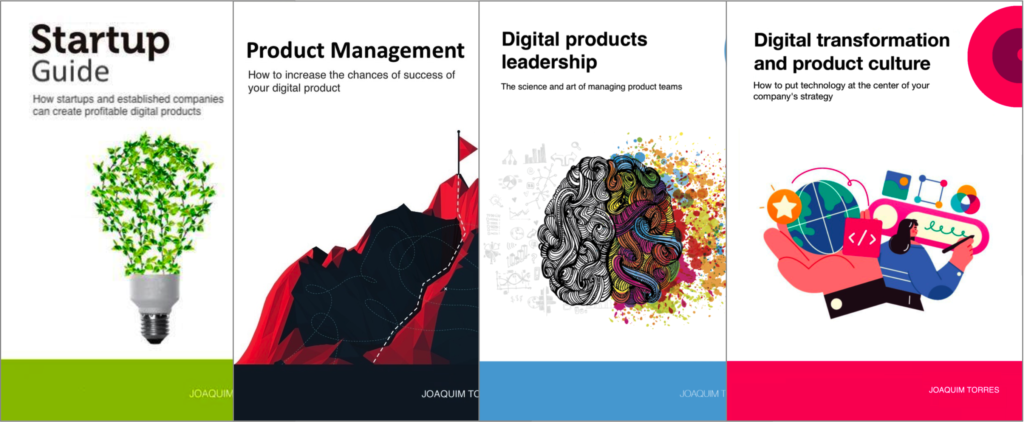
Sometimes we do product management without realizing it
13 de August, 2024
Preface to the new edition of the Startup Guide
27 de August, 2024When we set goals to be reached, I see some people saying things like “We need to set stretch goals,” even using quotes like “Shoot for the moon. Even if you miss, you’ll land among the stars.” This quote means we should always aim as high as possible – or even higher – since this can motivate people to achieve great things beyond normal performance levels. Even if we don’t “hit the moon,” the team can achieve great results.
We do need to be careful when setting stretch goals since there are known pros and cons of this practice:
| Aspect | Positive Points | Negative Points |
|---|---|---|
| Motivation | Can boost motivation and engagement. | Can demotivate if seen as unattainable. |
| Growth | Encourages skill development and learning. | There’s the risk of stress and burnout. |
| Innovation | Drives creative problem-solving. | May lead to risky, unsustainable and unethical practices. |
| Team Cohesion | May strengthen team collaboration. | Potential for conflicts and harmful competition. |
| Performance | Can lead to outstanding achievements. | Failure to meet goals may reduce confidence. |
So, when we set stretch goals, we must be careful with the negative aspects that can cause us to hit neither the moon nor the stars. If not set carefully, we may even shoot ourselves by demotivating the team, burning them out, or even generating unwanted behaviors.
When setting stretch goals, we must know the metric’s past behavior. This knowledge helps us determine whether a stretch goal, a BAU (business as usual) goal, or an easy goal is appropriate for this metric.
When we DON’T KNOW the metric’s past behavior, we are not setting a stretch goal. We are setting a wishful goal based on what we think is a good goal, but it’s based on our desire. Setting wishful goals is okay, but everybody on the team should know it’s a goal based on desire and not on data showing the metric’s past behavior. However, if we know the metric’s past behavior, we should avoid setting wishful goals since this will most certainly demotivate the team because of its unattainability.
Some examples
I’ve been helping a startup called footbao, which aims to democratize talents through technology. This is done by showing talent skill videos to fans and supporters with a chance to get noticed and eventually signed by a club. On Jan/24, this was only an idea, and we had a handful of talents and a few hundred fans. We didn’t have a team yet, and we set goals to be reached by Aug/24 for the number of talents and users. We are close to achieving these goals, but it is pretty clear that they are wishful targets. I remember clearly the conversations in January when we set these goals: “It would be nice if, by August, we have this amount of talents and fans on our platform.”
Now it’s August, and besides discussing what we’ve accomplished compared to the set goals, we will set goals for the rest of the year. And now we know better! We’ve been operating to reach the talents’ and fans’ goals for eight months. We know the behavior of these metrics. We understand what impacted their growth positively and negatively. So, we must set stretch goals based on all these learnings. These metrics’ goals can not be wishful goals.
On the other hand, we are pre-revenue. We haven’t yet generated any money from our product. We decided it’s now time also to experiment and pursue revenue opportunities. We do have some hypotheses of potential revenue streams but have no clue about which one we can implement with good performance. In this case, we have no option but to set a wishful goal. How much revenue do we wish to have by year end? In cases like this, a common wishful goal is the famous 1MM ARR (annual recurring revenue), which means 83.3K monthly revenue.
Another example is Gyaco, my company, which provides workshops and consulting on product management and digital transformation. I set goals every year for my company. This year’s goals are:
- Help companies and people better understand and perform product discovery. To do so, I’ve set goals for the number of talks I give and the people I talk to about product discovery. I also want to rewrite my first book, The Startup Guide, whose central theme is how startups and established companies can create profitable digital products. I know the number of talks I gave in 2023, and I know the work involved in writing and revising a book, as I wrote my 4th book in 2023. So, this is a stretched goal.
- Help companies outside Brazil. As a Brazilian, I noticed that the challenges and concerns in product management are quite similar worldwide. While many understand the operating model of Silicon Valley tech companies, they often find it challenging to implement these models in regular companies. This inspired me to demonstrate through examples from my carreer how product concepts, principles, and tools can be applied in any company to achieve remarkable results. This motivation aligns with Marty Cagan’s purpose for writing his third book on product management, entitled “TRANSFORMED,” which showcases how regular companies worldwide have successfully adopted the product operating model. In chapter 27, he highlights Brazil’s Gympass, where I served as CPO, as one of the examples. I have no idea how many companies outside Brazil I’ll attend by the end of the year, but that’s the reason why I continue to write in English, besides Portuguese, why I launch my books also in English, why I’ve giving talks and participating in podcasts in English. I have minimal knowledge of Brazilian experts supporting non-Brazilian companies. For this reason, this is a wishful goal.
There you have it, the difference between stretched and wishful goals, with real-life examples.
Workshops, coaching, and advisory services
I’ve been helping companies and their leaders (CPOs, heads of product, CTOs, CEOs, tech founders, and heads of digital transformation) bridge the gap between business and technology through workshops, coaching, and advisory services on product management and digital transformation.
Digital Product Management Books
Do you work with digital products? Do you want to know more about managing a digital product to increase its chances of success, solve its user’s problems, and achieve the company objectives? Check out my Digital Product Management books, where I share what I learned during my 30+ years of experience in creating and managing digital products:
- Digital transformation and product culture: How to put technology at the center of your company’s strategy
- Leading Product Development: The art and science of managing product teams
- Product Management: How to increase the chances of success of your digital product
- Startup Guide: How startups and established companies can create profitable digital products


